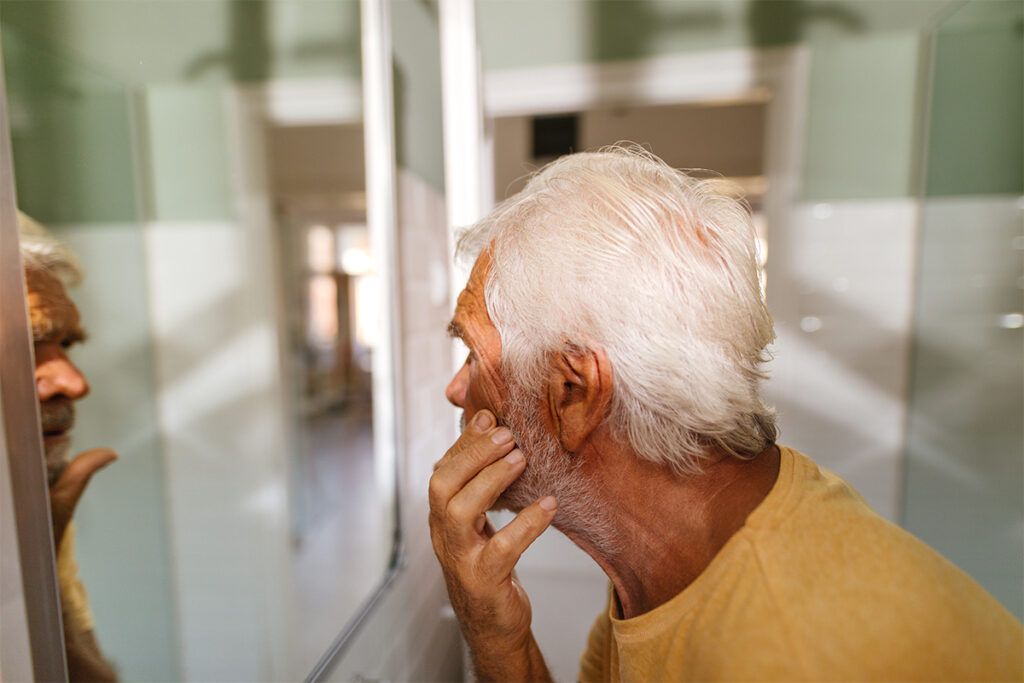A Crohn’s disease rash is typically associated with underlying inflammation in the gastrointestinal tract. It typically presents as itchy patches, blisters, or ulcers. It commonly affects areas around the mouth, anus, genitals, and limbs.
Managing the rash involves treating the cause of the inflammation and using topical or systemic therapies to reduce swelling and itching. Practicing good hygiene and trying to avoid triggers like stress and irritants can also help.
About the skin symptoms of Crohn’s disease

Crohn’s disease can present with various symptoms, including skin symptoms that can vary in appearance and severity. Some common skin symptoms of Crohn’s disease include:
- Erythema nodosum: This is the most common skin manifestation of Crohn’s disease. It appears as painful tender nodules that usually develop on the shins but can also occur on other body parts.
- Pyoderma gangrenosum: This is a less common but more severe skin condition. It presents as painful, deep ulcers that typically have irregular, undermined edges with accompanying pus or necrotic (dead) tissue.
- Aphthous stomatitis: This primarily affects the membrane around the mouth but can also cause small, painful mouth ulcers in people with Crohn’s disease.
- Cutaneous fistulas: Fistulas are abnormal connections between different parts of the body. In Crohn’s disease, fistulas can develop on the skin, leading to openings that may drain fluid, pus, or fecal matter.
Why does it happen?
When you have Crohn’s disease, your immune system becomes overactive and mistakenly attacks healthy tissues, including your skin. This abnormal immune response leads to inflammation in different parts of your body, causing a rash.
Doctors do not know the exact cause of this immune system dysfunction, but they think it might relate to the chronic inflammation in your intestines. This inflammation sends signals to your immune system, prompting it to react and affect your skin.
As a result, you may experience red or darkened raised and painful lesions in the perianal region or other body areas.
Additionally, genetic factors and environmental triggers may lead to the development of a Crohn’s disease rash.
How to treat the different skin conditions
Treating the different skin conditions associated with Crohn’s disease involves a combination of medications. These may include:
- Topical corticosteroids: These medications can help reduce inflammation and itching when you apply them directly to the affected skin. Common examples include hydrocortisone valerate (Westcort), betamethasone (Celestone-soluspan), and clobetasol (Dermovate).
- Systemic corticosteroids: A doctor may prescribe oral or injectable corticosteroids for more severe or widespread skin manifestations to help control inflammation. A common example includes prednisone (Omnipred).
- Immunomodulators: A doctor may prescribe medications like azathioprine (Imuran), mercaptopurine (Purinethol), or methotrexate (Otrexup) to suppress the immune system and reduce skin inflammation.
- Biologic therapies: A doctor may prescribe anti-tumor necrosis factor (TNF) agents like infliximab (Remicade) and adalimumab (Humira) or other biologic medications to target specific proteins involved in inflammation.
If you need help covering the cost of medications, the free Optum Perks Discount Card could help you save up to 80% on prescription drugs. Follow the links on drug names for savings on that medication, or search for a specific drug here.
